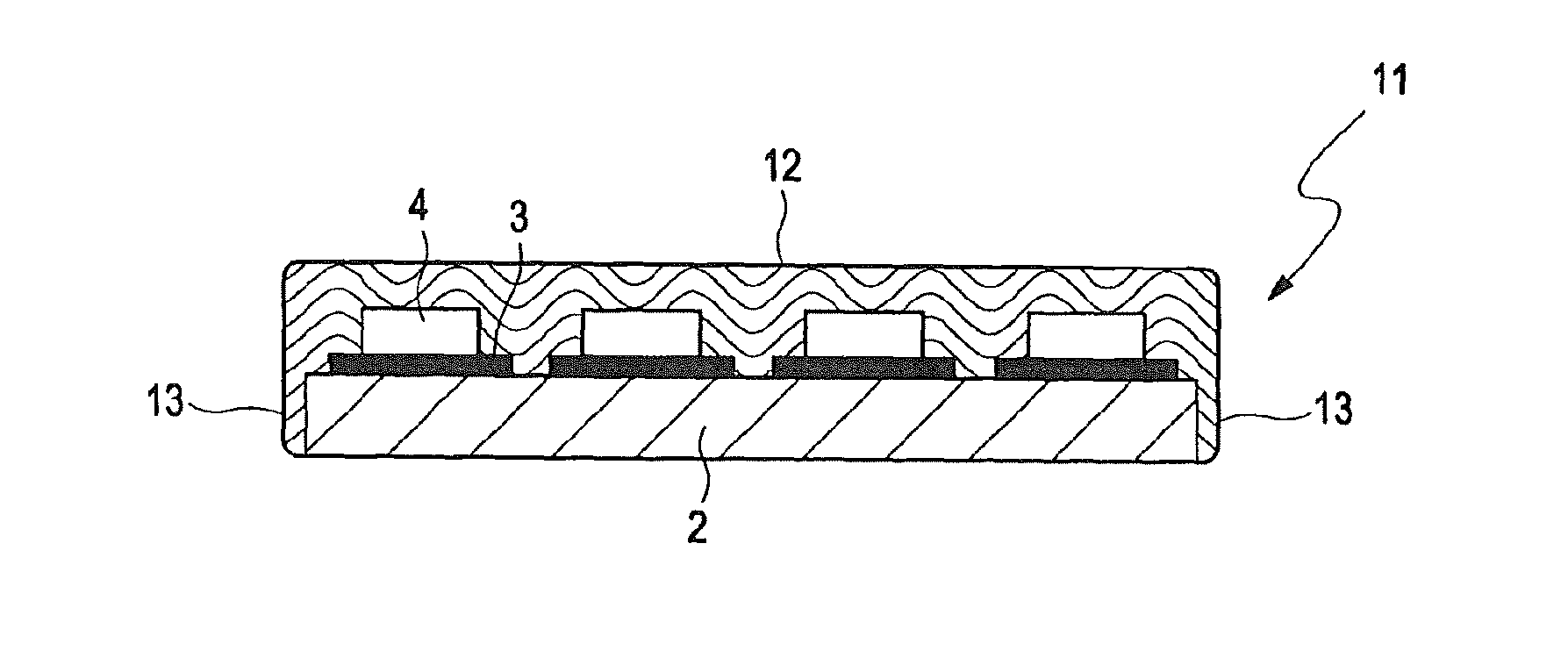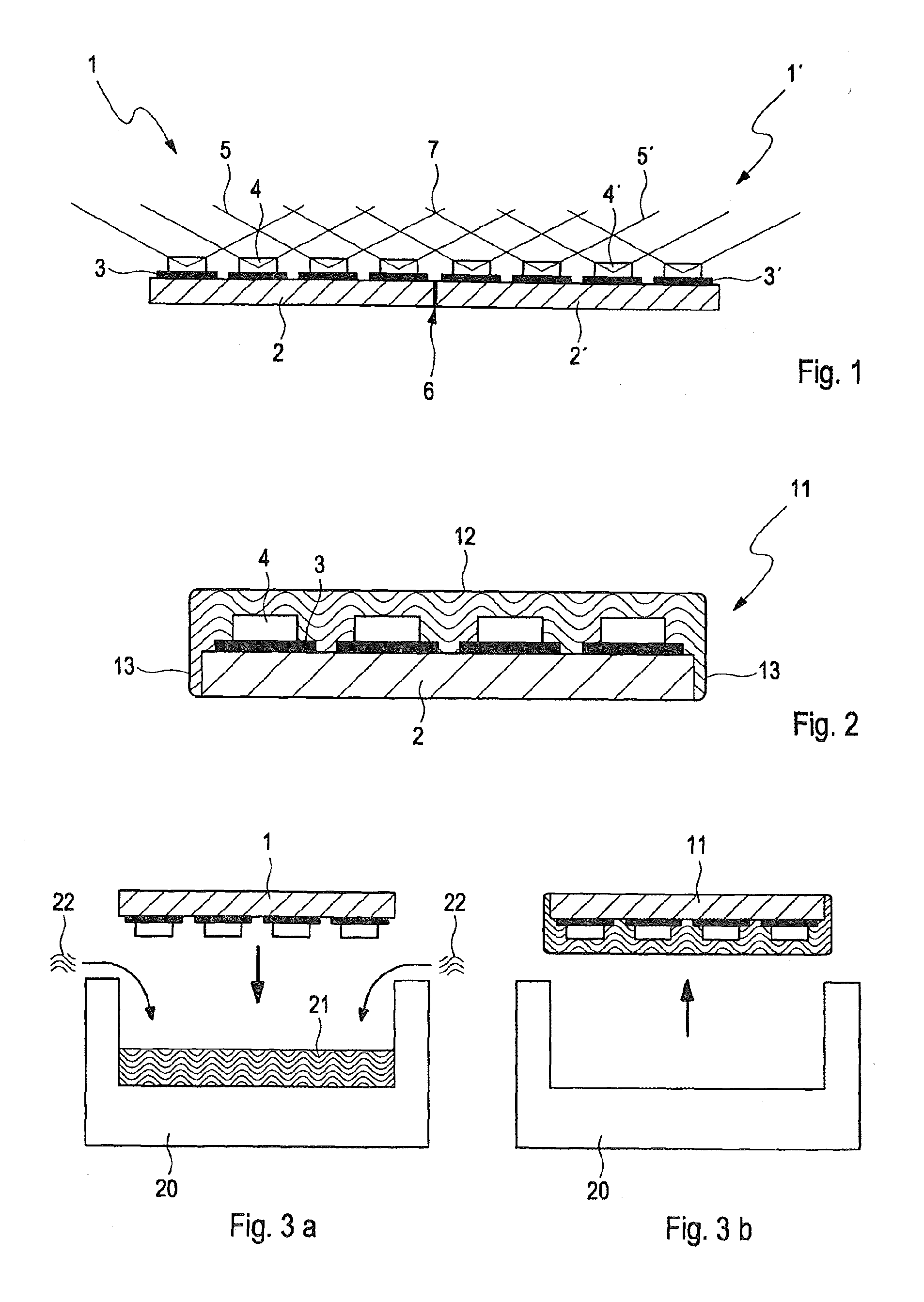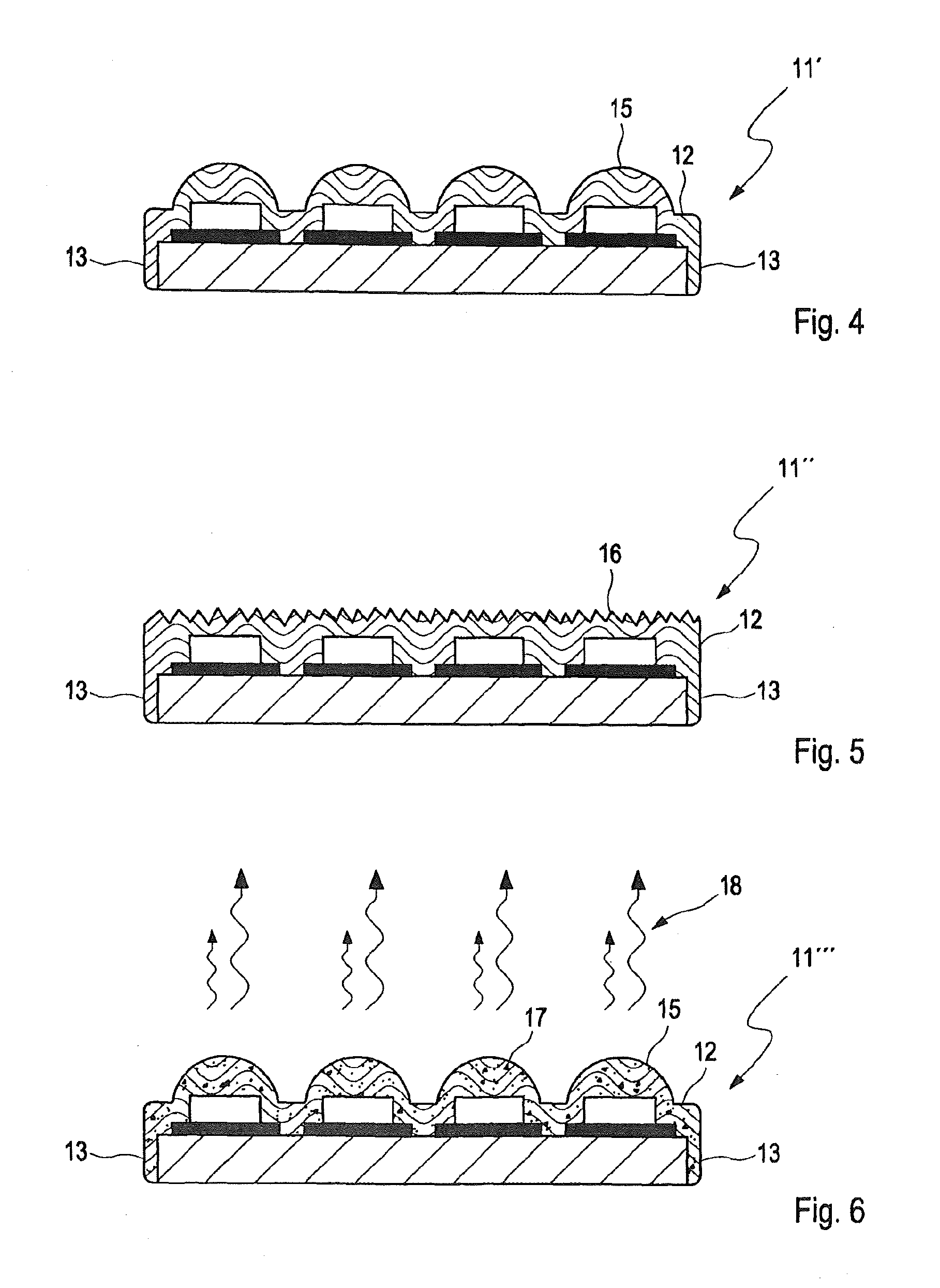Coating Method for an Optoelectronic Chip-on-Board Module
a chip-on-board module and optoelectronic technology, applied in the direction of printed circuit dielectrics, transparent dielectrics, printed circuit aspects, etc., can solve the problems of coating negatively affecting the light emission intensity or light sensitivity of optoelectronic chip-on-board modules, and high modularity. , the effect of simple and cost-efficient production sequen
- Summary
- Abstract
- Description
- Claims
- Application Information
AI Technical Summary
Benefits of technology
Problems solved by technology
Method used
Image
Examples
Embodiment Construction
[0136]The invention is explained with reference to chip-on-board LED modules, that is light-emitting bodies, as an example for optoelectronic chip-on-board modules. Within the scope of the invention photodiodes in solar cells or other components could be used as the optoelectronic components instead of LED modules.
[0137]FIG. 1 shows schematically in cross section a chip-on-board LED module 1 without coating, in which strip conductors 3, 3′ and LEDs 4, 4′ formed as non-housed LED chips are arranged in regular spacing on two parallel substrates 2, 2′ or carriers. For reasons of clarity, not all recurring elements of FIG. 1 and the following figures are provided with reference symbols, but these all refer to identical elements. Thus, in FIG. 1 only one LED 4, 4′ is designated for each of the two chip-on-board LED modules 1, 1′ with a reference symbol. The other components are identical.
[0138]A substrate 2, 2′ can be, for example, a metal, ceramic, or silicon substrate built using rigid...
PUM
| Property | Measurement | Unit |
|---|---|---|
| atmospheric pressure | aaaaa | aaaaa |
| atmospheric pressure | aaaaa | aaaaa |
| pressure | aaaaa | aaaaa |
Abstract
Description
Claims
Application Information
 Login to View More
Login to View More - R&D
- Intellectual Property
- Life Sciences
- Materials
- Tech Scout
- Unparalleled Data Quality
- Higher Quality Content
- 60% Fewer Hallucinations
Browse by: Latest US Patents, China's latest patents, Technical Efficacy Thesaurus, Application Domain, Technology Topic, Popular Technical Reports.
© 2025 PatSnap. All rights reserved.Legal|Privacy policy|Modern Slavery Act Transparency Statement|Sitemap|About US| Contact US: help@patsnap.com



